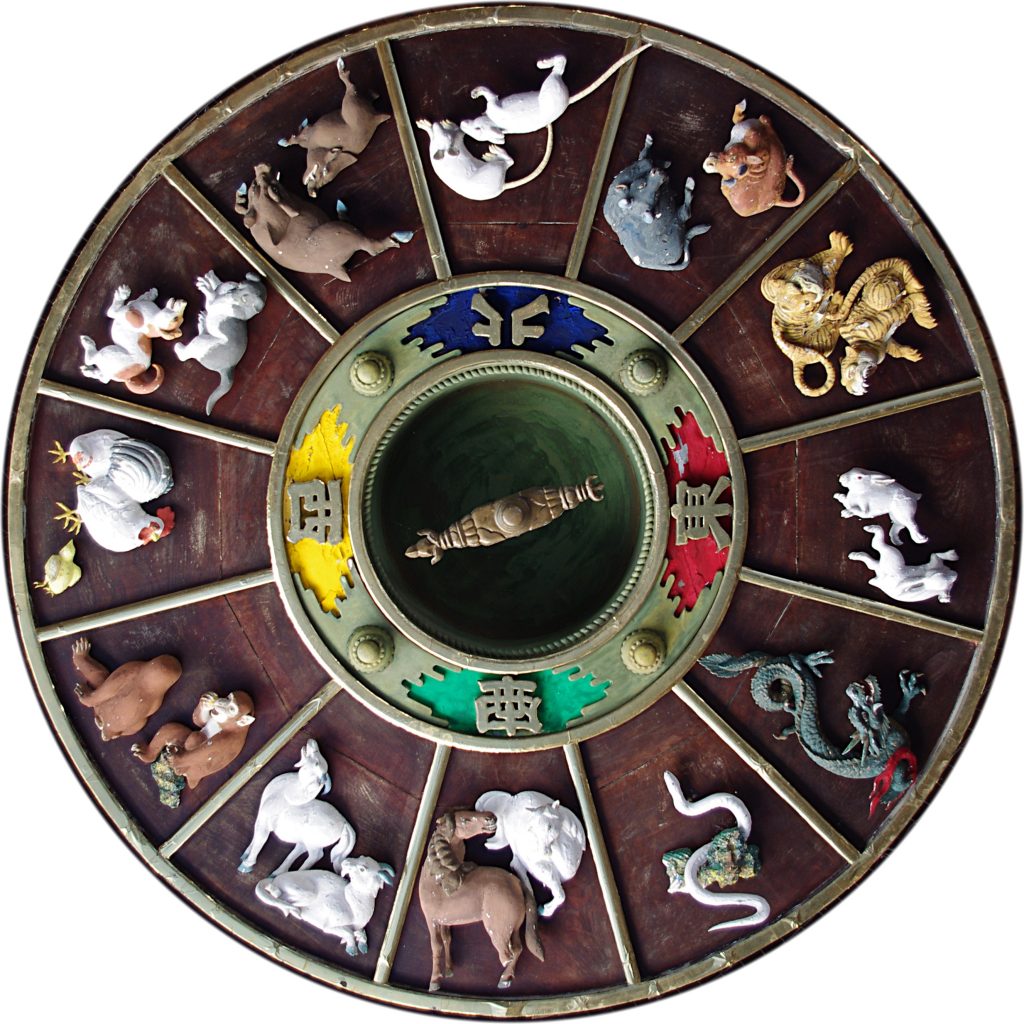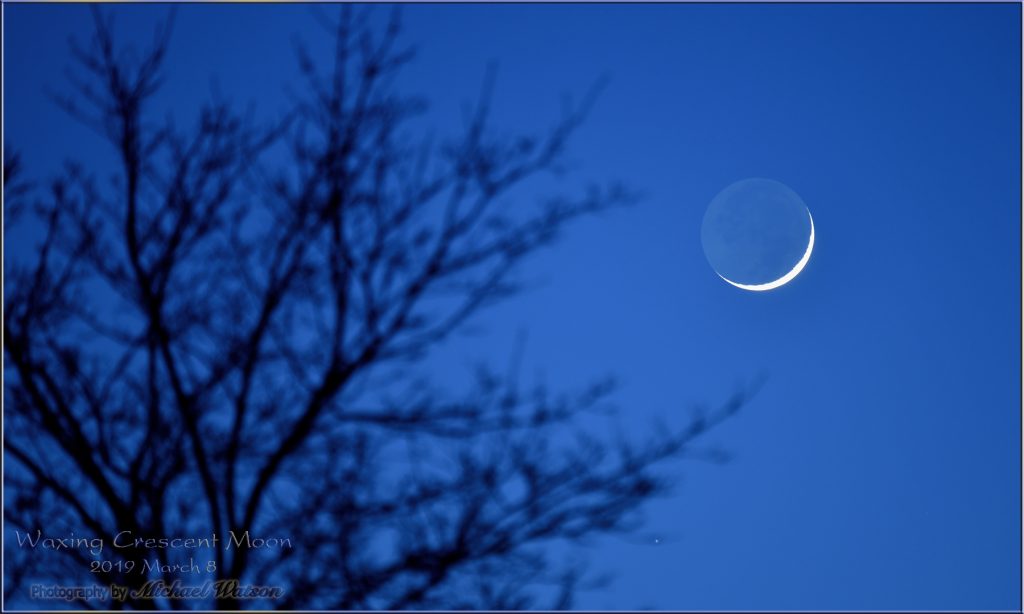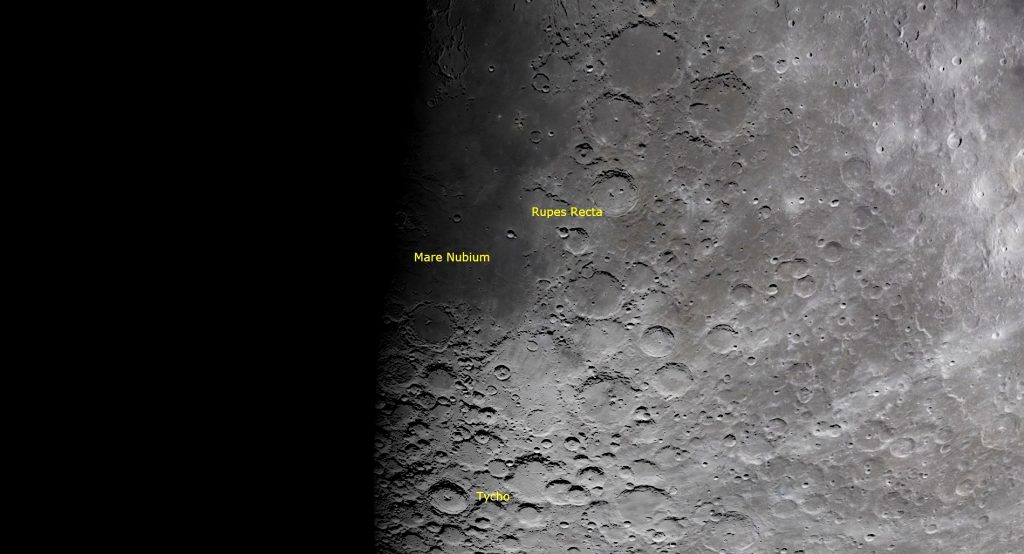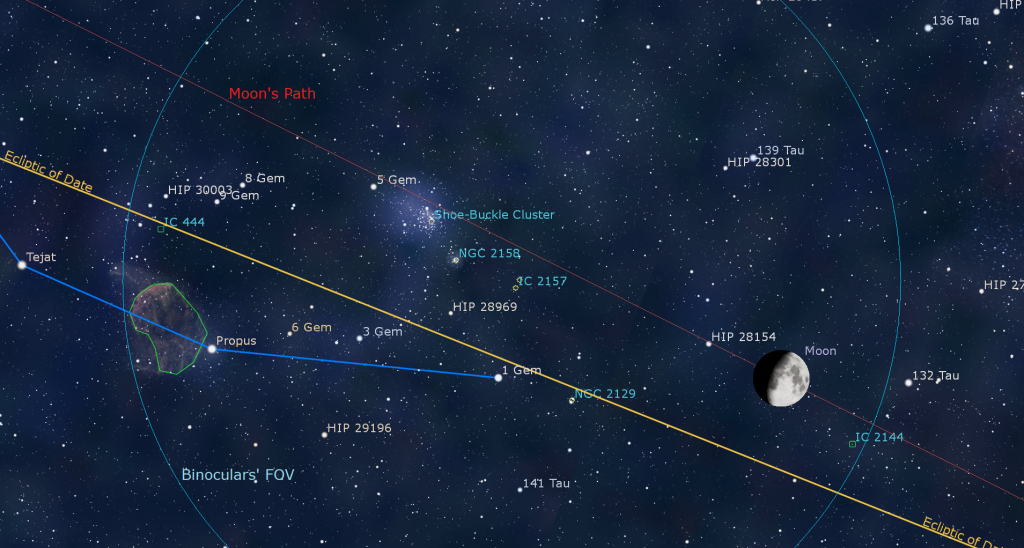Learning about Lunisolar New Years, the Evening Moon Earns Views and Meets Mars, and Plentiful Planets in Pre-dawn!
NASA’s Perseverance Rover is scheduled to land in Jerzero Crater on Thursday, February 18 at about 3:55 pm EST, joining the Hope orbiter of the United Arab Emirates and the Chinese Tianwen-1 mission that arrived on February 9 and February 10, respectively. (Image from NASA https://mars.nasa.gov/mars2020/timeline/landing/)
Hello, Valentine’s Day, Stargazers!
Here are your Astronomy Skylights for the week of February 14th, 2021 by Chris Vaughan. Feel free to pass this along to your friends and send me your comments, questions, and suggested topics. You can also follow me on Twitter as @astrogeoguy! Unless otherwise noted, all times are expressed in Eastern Time. To subscribe to these emails please click this MailChimp link.
I can bring my Digital Starlab portable inflatable planetarium to your school or other daytime or evening event, or teach a session online. Contact me through AstroGeo.ca, and we’ll tour the Universe, or the Earth’s interior, together!
Last Friday, the moon was new and kicked off the lunar New Year in China and elsewhere – so I’ll tell you how that works. The moon will return to view in the evening sky for observers around the world this week, enticing us with dramatic vistas along the terminator as it waxes. Meanwhile, it will visit Mars and Uranus – and brush past the face of the Bull and the toes of the Twins. The rest of the visible planets are tucked close to the sun in the pre-dawn sky. And on Thursday, the NASA Perseverance Rover will land on Mars! Read on for your Skylights!
Lunar New Year and Lunisolar Calendars
A lunisolar calendar uses the 29.53-day cycle of the moon’s phases for the months of the year – usually starting each month when the new moon phase occurs, or on the day when the young crescent moon is first glimpsed after sunset. The placement of those months is anchored to a solstice or equinox. Because solstices and equinoxes are Earth-Sun phenomenona, and completely independent of the moon’s phases, lunisolar calendars drift compared to our Gregorian system. And, because the moon runs through its cycle 12.37 times per year, every second or third year requires an extra 13th intercalary or “leap” month.
The Chinese lunisolar calendar places the December solstice into the eleventh month – causing the first month of the subsequent year to begin about two months later – on the new moon that occurs somewhere between January 21 and February 20 on the Western Gregorian calendar. Most of the time, that moon phase lands in early February.
When the moon officially reached its new moon phase last Thursday at 2:05 pm EST (or 19:05 Greenwich Mean Time), it triggered the Lunar New Year observed in many Asian countries. Since the new moon happened on Friday, Beijing-time, that was the first day of the Chinese New Year worldwide, and also commenced the Spring Festival 春节, or Chūn Jié (“CHWUN-jee-eh”), which runs until the full moon two weeks later.
Happy Year of the Ox! The Chinese use a zodiac system – but theirs doesn’t relate to the sun’s journey along the ecliptic, or even animal constellations. Instead, their zodiac preserves the sense of that word from the Ancient Greek expression zōdiakòs kýklos (ζῳδιακός κύκλος), “cycle of small animals”. They assign an animal and its attributes to each year in a repeating 12-year cycle, which may have arisen from the 11.85-year orbital period of Jupiter!
The order of the animals is said to have been determined by a great race to become the guards of the Jade Emperor – with their rank determined by the order the animals arrived at the palace. The race involved both running and swimming. The mighty ox was a shoe-in to win the race. But the rat woke up early on race-day and took the lead. Arriving at the river, he feared to cross it. When the ox arrived, the rat jumped onto the gentle ox’s back and hitched a ride across. Upon reaching the opposite shore, the little rascal jumped off the tired ox and raced ahead to win the race, leaving the ox with second place! Did he cheat – or was he clever, and worthy to be senior-most of the guards?

2021 is the second year of the current cycle. When asked their age, Chinese people will commonly answer with the animal of the year they were born in. In traditional Chinese astronomy, the Jade Emperor’s Palace was represented by the stars of Ursa Minor (the Little Bear), including the Pole Star Polaris.
The Chinese celebrate the New Year with red decorations and firecrackers because, stories say, long ago a mythical beast called Nian used to terrorize rural villages. After many years, an old man declared he would deal with Nian while the rest of the villagers hid during the night. He scared the beast away by putting up red papers and making loud noises. So when New Year was approaching, people would wear red clothes, hang up red lanterns, place red scrolls on windows and doors, and use firecrackers to frighten away the Nian. From then on, it never came to the village again. “Xīnnián Kuài lè!” 新年快乐!
The Nisga’a indigenous group of British Columbia traditionally celebrate their new year when the crescent moon first appears after its new phase in February or March. Their celebration is called Hobiyee, a name derived from the expression “Hobixis Hee!”, which means “the moon is in the shape of the hoobix”. A hoobix is the bowl of the Nisga’a traditional wooden spoon. The young moon’s orientation after sunset, with its horn-tips pointing upwards, resembles a celestial scoop – ready to be filled with an abundance of salmon, river saak (candlefish), berries, and more. Children gleefully run about with their arms curved upwards, pretending to be the moon. The first month of the Nisga’a year is called Buxw-laks, where buxw means “to blow about” and laḵs means “needles” – a sure sign of winter’s end.
The Moon
This will be a wonderful week for folks all around the world to enjoy views of the moon. Our beautiful natural satellite will be filling up with light each night as it increases its angle from the sun. The waxing moon will be visible in the daytime sky before sunset, and then all evening long – allowing junior astronomers to enjoy it, too!
To begin the week, the young crescent moon will grace the southwestern sky after sunset, and then descend throughout the evening. Keep an eye out for Earthshine or the “Ashen Glow”. When sunlight reflects off of clouds and the Pacific Ocean, it slightly illuminates the part of the moon’s disk that isn’t receiving sunlight directly. Some call this phenomenon “the old moon in the new moon’s arms”.

The curved, pole-to-pole terminator boundary that divides the moon’s lit and dark hemispheres shows where the sun is rising on the moon. The near-horizontal sunlight arriving there bathes peaks and crater rims in bright light, and casts long shadows west of them. Every little bump is enhanced by that lighting – and with no atmosphere to scatter light, the contrast is dramatic. Even better – new regions are highlighted each night, or even hour-by-hour. Watching dark craters fill up with light is particularly interesting. Young scientists can reproduce the effect at home using cereal bowls or cooking pots and a flashlight in a dark room. Put a toy in the bowl and see how the top of it gets illuminated before the rest does as you raise the light higher over the rim.
From Sunday to Tuesday night, the moon will swim through the water constellations of Cetus (the Whale) and Pisces (the Fishes). On Wednesday night, the moon will pass several finger widths to the upper left (or 4 degrees to the celestial southeast) of Uranus, in Aries (the Ram).
In the southwestern sky on Thursday evening, the waxing, half-illuminated moon will be positioned several finger widths below (or 3.7 degrees to the celestial south) of Mars. The moon and the planet will fit together in the field of view of your binoculars. By the time they set shortly after midnight local time, the diurnal rotation of the sky will lift the moon to the planet’s left.

When the moon completes the first quarter of its orbit around Earth at 1:47 pm EST (or 18:47 Greenwich Mean Time) on Friday, the relative positions of the Earth, sun, and moon will cause us to see it half-illuminated – on its eastern side. At first quarter, the moon always rises around noon and sets at around midnight, so it is also visible in the afternoon daytime sky. This first quarter phase will occur while the moon is passing several degrees to the right (or celestial north) of the triangular face of Taurus (the Bull), which is composed of the large Hyades star cluster, plus the bright foreground star Aldebaran. Look for the bright Pleiades star cluster sitting off to the moon’s right. For people living in the Central, Mountain, and Pacific time zones, the moon will set progressively later – allowing it additional time to get closer to Taurus.
The waxing gibbous (i.e., more than half-illuminated) moon will spend the rest of the coming weekend near the stars that mark Taurus’ horn tips, and the toe stars of Gemini (the Twins). At the same time, the moon will be crossing through the giant Winter Hexagon asterism, composed of the bright stars composed of the brightest stars in the constellations of Canis Major, Orion, Taurus, Auriga, Gemini, and Canis Minor – specifically Sirius, Rigel, Aldebaran, Capella, Castor & Pollux, and Procyon. After dusk, the huge pattern will stand upright in the southern sky – extending from 30 degrees above the horizon to overhead. It’s so large that the moon won’t finish crossing it until Tuesday, February 23!

Finally, if Saturday evening, February 20, is clear, grab your backyard telescope and look at the Lunar Straight Wall. That night, the terminator will fall just to the left (or lunar west) of Rupes Recta, also known as the Lunar Straight Wall. This feature is very obvious in strong binoculars, too. The rupes, Latin for “cliff”, is a north-south-aligned fault scarp that extends for 110 km across the southeastern part of Mare Nubium – that’s the large, dark region located in the lower third of the moon’s Earth-facing hemisphere. The Straight Wall is always prominent a day or two after first quarter, and again just before third quarter. For reference, the Straight Wall is located above (to the lunar north) of the prominent crater Tycho.
On Sunday night, February 21, the eastward orbital motion of the moon will carry it towards and across the large open star cluster known as Messier 35, or the Shoe-Buckle Cluster. Immediately after dusk, the moon will be positioned several finger widths to the upper right (or 4 degrees to the celestial west) of the cluster. Hour by hour the moon will approach the cluster, and the rotation of the sky will lower the moon to the cluster’s right, and then below it. By the time the moon sets after 3 am local time, observers in the Eastern Time Zone will see the moon only a small distance below the cluster. Observers farther west will see the moon pass across the cluster and leave it behind before moonset. To best see Messier 35’s stars, hide the bright moon beyond the edge of your binoculars’ field of view.

The Planets
Except for Mars and Uranus (and faint Neptune hugging the western horizon after dark), all of the planets are currently gathered just west of the sun in the southeastern pre-dawn sky. While this could technically be called a “planetary alignment”, they aren’t arranged in a narrow line, or row. Mercury’s higher orbital inclination sets it apart. Gatherings like this are not particularly rare.
If you have a low and unobstructed view of the east-southeastern horizon, and the morning weather forecast predicts no clouds in that direction, get outside early and see how many of the planets you can spot!
Saturn and Mercury will rise first – at about 6:20 am in your local time zone. Saturn will be situated a generous palm’s width to the right (or 7° to the celestial southwest) of Mercury. The speedy planet will move closer to Saturn during this week – landing about four finger widths from the ringed planet next Sunday. Try to spot Saturn first, as it will shine twice as brightly as Mercury.

Even brighter Jupiter will rise at about 6:40 am local time – but the twilight will have brightened the sky more by that time. Jupiter will be located a palm’s width to the lower left of Saturn – with Mercury a few finger widths above Jupiter on Monday morning. By next Sunday morning, Mercury’s motion will shift it to sit above and between Jupiter and Saturn.
Venus has been diving sunward, causing that bright planet to rise last – at about 7 am local time. Venus is brighter by far than the other morning planets, but will be tough to see in the brightening sky. Venus will start the week sitting a few finger widths to Jupiter’s lower left (celestial east), but that separation will increase each morning. Be sure that the sun is fully below the horizon before you search for the morning planets with binoculars. Note that observers who live closer to the tropics will see these planets more easily because they will be more directly above the sun and therefore shining in a darker sky before dawn.
Mars is still available for evening viewing between dusk and almost midnight every night, but it has been getting fainter, and smaller in telescopes, with each passing week. The medium-bright, reddish dot of Mars will be located two-thirds of the way up the southwestern sky at dusk. Then it will descend all evening and set at about 1 am local time.

Mars’ orbital motion eastward along the ecliptic is slowly shifting it closer to the bright star Aldebaran in Taurus (the Bull). That star will look about as bright and as red as Mars. Over the course of this week, Mars will move from about two fist diameters to Aldebaran’s lower right (or 21° to the celestial southeast) to 1.5 fist diameters away. Each night, the bright little Pleiades star cluster will sit above and between Mars and Aldebaran.
NASA’s Perseverance Rover is scheduled to land in Jezero Crater on Mars at about 3:55 pm EST on Thursday, February 18! It’s a robotic biology laboratory designed to hunt for signs of past or current life on Mars in an ancient river delta. It will also have stereo vision cameras, a microphone to listen to Mars, and a flying drone copter! You can catch briefings in the days ahead, and watch the landing live on NASA TV at https://youtu.be/21X5lGlDOfg.
Meanwhile, Mars’ motion is carrying it farther from dim and distant Uranus, which is positioned about 1.3 fist diameters to Mars’ lower right (celestial west) tonight (Sunday). Use the two brightest stars of Aries (the Ram) to help you locate the magnitude 5.8 planet. The magnitude 2.0 star Hamal is a little brighter than its magnitude 2.6 neighbour Sheratan, which sits just to Hamal’s lower right. Those stars are located to a fist’s diameter to the upper right (or 10 degrees to the celestial north) of Uranus.
View Uranus earlier in the evening, when it’s higher in the sky and shining through less of Earth’s distorting atmosphere. In a telescope, Uranus will resemble the stars near it – but the planet won’t twinkle as much as they do, and it will show a blue-green colour. Sharp-eyes might be able to see Uranus without aid under a very dark sky, before the moon grows bright. Binoculars will show it easily.
Valentine’s Night Treats
If you missed last week’s bouquet of celestial Valentine’s Day night treats, I posted it with photos of the objects here. And if you’d like to see NASA’s highly-detailed photo of Pluto, with its giant heart-shaped glacier, it can be viewed here.
Public Astro-Themed Events
Every Monday evening, York University’s Allan I. Carswell Observatory runs an online star party – broadcasting views from four telescopes/cameras, answering viewer questions, and taking requests! Details are here. Their in-person Wednesday night viewing has been converted to online via the observatory Youtube channel, where they offer free online viewing through their rooftop telescopes, including their 1-metre telescope! Details are here.
On Monday, February 15 through Wednesday, February 17, University of Toronto’s Astronomy & Space Exploration Society (ASX) will present an online symposium called Mysteries of the Universe. Leading research scientists including Dr. Anastasia Fialkov, senior research fellow with the Kavli Institute at the University of Cambridge; Dr. Marc Kamionkowski, professor of theoretical physics & astronomy at Johns Hopkins University; and Dr. Chris Impey, professor of astronomy at the University of Arizona will explore the latest research on black holes, dark matter, and dark energy. Details and tickets can be purchased here.
My free, family-friendly Insider’s Guide to the Galaxy webcasts with Jenna Hinds of RASC National will return on Tuesday afternoon, February 16 at 3:30 pm EST. We’re going to talk about what to see on the moon! You can find more details, and the schedule of future sessions, here and here.
On Wednesday evening, February 17 at 7:30 pm EDT, the RASC Toronto Centre will live stream their monthly Speakers Night meeting. This month will feature Dr. Hilding Neilson of the University of Toronto. He is a Mi’kmaq from Ktaqmkuk (Newfoundland) whose work focuses on stellar and exoplanet astrophysics and on indigenizing astronomy. His talk is entitled Indigenous Astronomies, Stories of the Sky and Indigenizing the Drake Equation. Everyone is invited to watch the presentation live on the RASC Toronto Centre YouTube channel. Details are here. The RASC Toronto Centre has an archive of their past meetings and guest lectures on their YouTube Channel here.
On Thursday, February 18, from 7 to 9 pm, whether cloudy or clear, the Ontario Science Centre will live stream a free, public, all-ages Virtual Star Party in celebration of the Perseverance Rover’s arrival on Mars. I’ll be a co-host, and we’ll have space trivia, sky tours, live Q & A from viewers, and live views of the moon, Mars, and gorgeous deep sky objects through RASC, Toronto Centre members’ telescopes. You can tune in to Facebook Live here or to YouTube here.
On Sunday afternoon, February 28 from 1 to 2 pm I’m hosting an online session for RASC called Ask an Astronomer in support of the David Dunlap Observatory! We’ll explore the night sky together and answer your astronomy and space-related questions in simple language – using pictures, illustrations and planetarium software. The deadline to register is Friday February 26 at 3:00 pm. Registration is here. A modest fee goes to support our ongoing efforts to deliver public programs at DDO.
Keep looking up, and enjoy the sky when you do. I love questions and requests. Send me some!